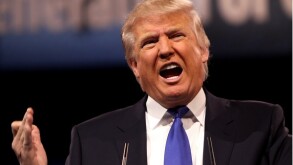
|

|
Khoonming Ho |
Lewis Lu |
The Standing Committee of the Chinese National People's Congress (NPC) finally passed the Environmental Protection Tax Law (EPT Law) on December 25 2016. The law will take effect from January 1 2018.
The conclusion of the EPT Law follows six years of development work on what is China's fifth tax law (most of China's taxes have their legal basis in State Council regulations rather than NPC laws).
The EPT replaces the system of pollutant discharge fees (PDF), which have been applied for more than 30 years. While the objects and scope of taxation under the EPT and PDF, and the manner of tax calculation, are broadly similar, the provisions of the EPT are more tightly drawn. Furthermore, a new administrative framework applies, meaning that polluting enterprises may need to alter their compliance approaches and may face changes in tax burden levels.
The EPT, like the PDF, applies to four pollutant categories when discharged directly into the environment on Chinese territory:
Air pollution;
Water pollution;
Solid waste; and
Acoustic noise.
A range of exclusions exist, however. These include, inter alia:
Discharge of sewage/domestic waste into treatment facilities and solid waste into storage/disposal facilities where these meet national standards;
Emissions from agricultural production; and
Motor vehicle/vessel/aircraft emissions.
Where EPT applies, the EPT Law sets out the taxable bases (e.g. a pollution equivalent quantity for air/water pollution that takes into account, alongside volume, the harmfulness of the pollutants and the public cost of dealing with them) and the range of rates that may apply (e.g. for air/water pollution the EPT may be imposed at up to 10 times the level of the base rate). While local governments may determine the level of EPT within the range, as was the case for PDF, a far more formal and legislative procedure is set out, relative to PDF, requiring local NPC approval of rates and national NPC registration. Special tax rebates apply where pollution levels fall below national/local benchmarks by specified percentages.
The administration and collection of EPT will be conducted by the local tax authorities, transitioning from the PDF arrangements under which the local environmental protection department administered the PDF and it was paid to local finance departments. Under the EPT arrangements, the local environmental protection department will monitor pollution levels and, using a dedicated information exchange platform, supply data and technical support to local tax authorities.
On the whole, the PDF to EPT transition is expected to result in more robust pollution taxation, as local governments will be subject to strict procedures both in setting EPT levels and in administering collection, limiting room for discretionary imposition and collection practices. Whether the transition to EPT results in an increase or reduction in liabilities relative to PDF depends on the local setting of the rates under EPT and the specific circumstances of the taxpayer. However, with the EPT framework now being put in place, it may well be that the national government seeks, over time, to raise tax levels and the range of pollutants covered, in line with national anti-pollution strategies.
Shenzhen-Hong Kong Stock Connect
On December 5 2016 the Shenzhen-Hong Kong Stock Connect cross-border share trading mechanism commenced operation. This complements the Shanghai-Hong Kong Stock Connect mechanism, in place since November 2014, and enables international investors to trade selected A-shares, listed on the Shenzhen Stock Exchange (SSE), via the Hong Kong Stock Exchange (HKSE). It also allows qualified mainland investors to trade in HKSE-listed shares via the SSE.
To facilitate cross-border investment activity, and in a similar manner to Shanghai-Hong Kong Stock Connect, preferential Chinese tax treatments have been clarified. On November 5 2016, MOF, SAT and CSRC issued Circular 127 announcing temporary exemptions from Chinese income taxes (corporate and individual income tax) and Value Added Tax (VAT) for trading gains arising to foreign investors on SSE-listed shares, where transacted through Shenzhen-Hong Kong Stock Connect. Going the other direction, temporary income tax and VAT exemptions are also provided for the trading gains of Chinese investors arising from HKSE-listed shares, where transacted through Shenzhen-Hong Kong Stock Connect (though the income tax exemption only extends to Chinese individuals and not Chinese corporations). Dividend income continues to be fully subject to tax, though the foreign investors can potentially access treaty relief.
The preferential tax treatments for Stock Connect trading gains sit alongside existing corporate income tax exemptions for A-share trading gains realized by foreign investors through the Qualified Foreign Institutional Investor (QFII) and Renminbi QFII (RQFII) programs. QFII and RQFII, operating more broadly than Stock Connect, also allow investment in other forms of listed investment (e.g. bonds, futures, units in Chinese mutual funds). No special VAT or income tax treatment is provided for these non A-share investments and as such careful planning and use of tax treaties, where available, are still needed.
Khoonming Ho (khoonming.ho@kpmg.com) and Lewis Lu (lewis.lu@kpmg.com)
KPMG China
Tel: +86 (10) 8508 7082 and +86 (21) 2212 3421
Website: www.kpmg.com/cn










